School Trip to Bath
School Trip to Bath (February 2024)
Written by the students in Seconde 3
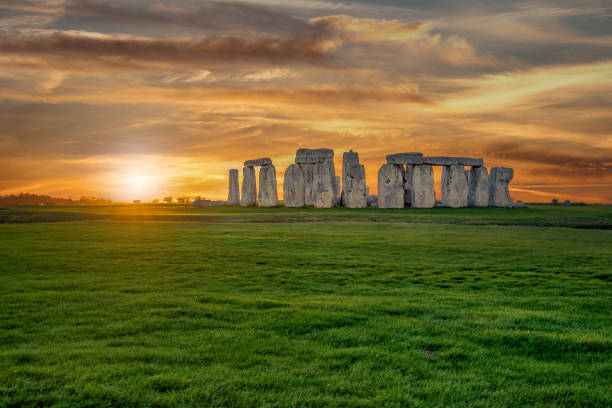
DAY 1 – Stonehenge
On the first day of our trip we stopped at Stonehenge and visited the site.
This place is composed of a stone temple and its museum. We first went to the museum where we learnt some facts and information about Stonehenge.
The temple was built around 3000 before Christ by people living in late neolithic Britain. It took four steps to make it, the first one was to choose and imagine the positions of the stones : it is the earthwork. The second was to put them in the chosen places : the stone sitting. In the third one they created the path that would lead to the temple : the Stonehenge avenue, and on the last one they added blue stones to the grey ones : the bluestones rearrangement at Stonehenge.
The Stonehenge temple was mainly used by the locals and the druids. They used to live in small habitations made of terracotta and straws. It was cold and dark inside. They also used the stones to make tools such as daggers and axes.
The Stonehenge temple was used for animal sacrifices. It was a Sun temple, the stones were placed in such a way that the light would reflect at any hour. This was also a place to gather and celebrate the midsummer and midwinter solstices.
Unfortunately, the site deteriorated : stones were stolen to build new monuments.
There also were some rumours saying that there were human sacrifices in the temple, which were later confirmed.
The Arthurian legend says that Merlin used his magical powers to convince a giant to move the stones of Stonehenge, then established in a circle on Mount Killaraus, in Ireland to England. The place was to serve as a burial place for royalty.
We thought the height and the balance were very impressives. It’s not just big rocks, it has a history and a meaning behind it. They saw centuries of monarchs and generations, and we think it rocks.
This article was written by Solène, Inès, Audrey et Nina.
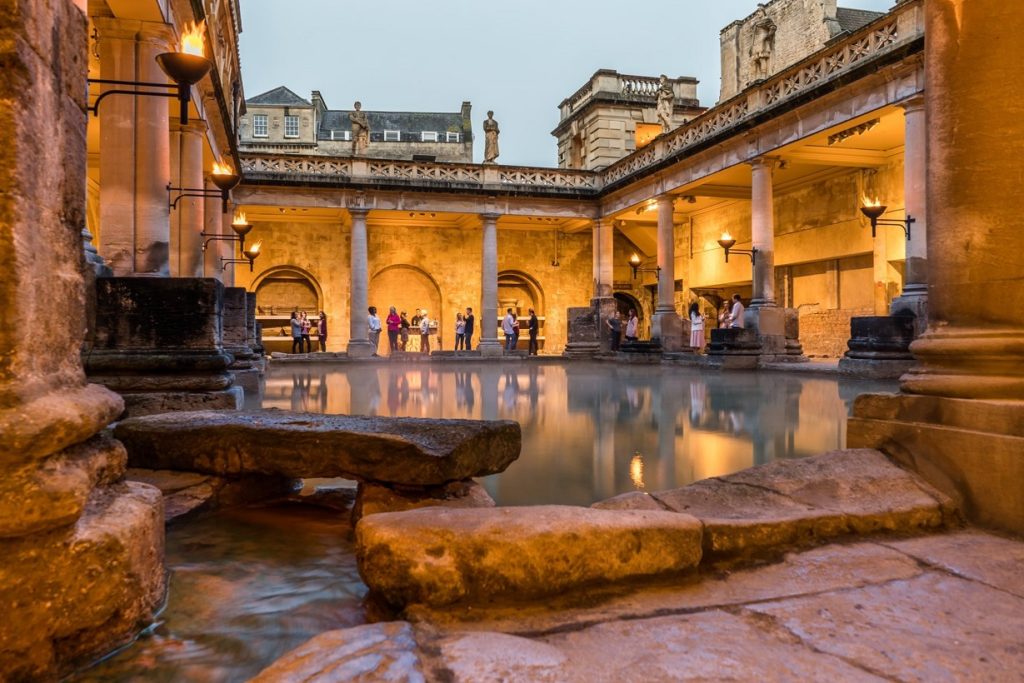
DAY 2 – Bath
The Roman Baths
Tuesday morning, we went to the Roman Baths. And we’ll let the source of water tell you her story.
‘Hello, I am a bubbling water source who provides 1.17 million liters every day to my home. I have always been there, but the Celts discovered me and consecrated me to Sulis. When Claudius conquered Britain, they built me a home, the thermal baths. And they consecrated me to Minerva, the equivalent of Sulis. But after the fifth century, they abandoned me, and there were floods and mud. In the sixteenth century, English people created the queen basin. And at the end of the eighteenth century, they built the Grand Pump room to lock me in one place. The baths that used my water continued to grow. Today, people built a museum in my place and now I am one of the biggest attractions in England.
So now, I am going to show you some of the object in my home, as you already know, it was consecrated to Minerva, and so there are multiples symbols of her they are everywhere; on top of the doors, in the mosaics on the walls, and on a magnificent mask… As a shrine to Minerva, people prayed to her and offered her some money or objects, and so there is a sacrificial altar, and some people wrote prayers or complaints to Minerva. As a roman bath, it has three baths, the caldarium, a hot bath, the tepidarium, a lukewarm bath, and the frigidarium, a cold bath. It is still required to heat the water, even though the water from this source is hot. And so, under the floor there are spaces in which it is possible to heat the air with fire, and then to heat the water from under. The baths were used as a cemetery, there are some bones and a gravestone. The source was known as a healing place, where people used hydrotherapy using the three baths mentioned earlier. There also is a gym, allowing people to practise sport. These functions made this Roman bath a dynamic place that can give us a better understanding of Roman society.’
We are impressed by the vault because it is impressive how huge it is. The statues and the Roman objects were also well maintained, and their symbols were interesting. Moreover, the place is gigantic, like there always is something else to see. But we were disappointed because we couldn’t swim in the water. And the taste of the water was horrible. Also, we wrote a paper like in Roman times to ask for better weather, but it didn’t work.
By Garance, Marine, Sasha, Pierre and Nicolas.
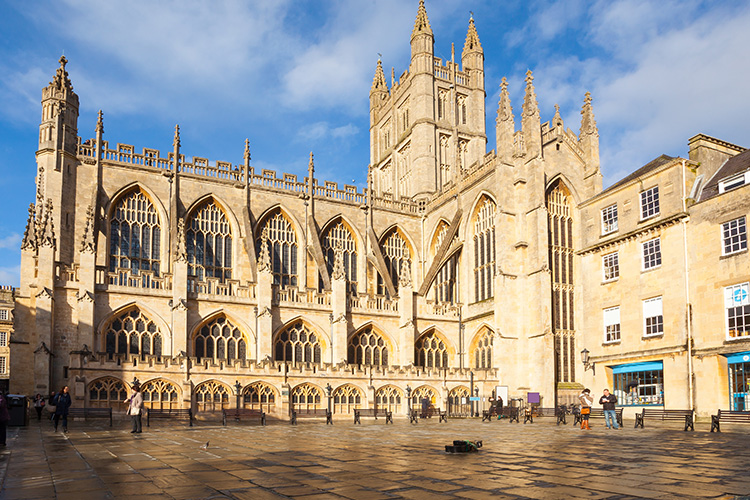
The Bath abbey
Introduction
Bath Abbey was founded as a Benedictine monastery. Its monks were committed to community life, a rhythm of prayer and welcoming visitors. The Abbey is now a parish church, guided by these same values
On the step of the monarchy
British royalty was founded here. In 973 The crowning of Edgar, King of all England took place in this abbey. This special ceremony is still used for the British crowning ceremonies like Charles the third’s.
In 1973, Queen Elisabeth the second came to Bath for the thousandth anniversary of Edgar’s crowning .
The architecture
Entering in the abbey we can see the 56 stained glass windows behind the altar which relate to Jesus’s life. On the floor, there were 891 tombs but they were taken out when the floor was restored
There are many chapels, for example the Bride chapel was built in memory of a priest. At its right there is the Gethsemane chapels, who commemorates the victims of the second war and the persecutions.
Our perception
We found this monument impressive and spectacular.
We liked spotting the little details on the front of the building and on the stained glass.
By Laure, Marine, Lou, Apolline, Manon, and Aurore.
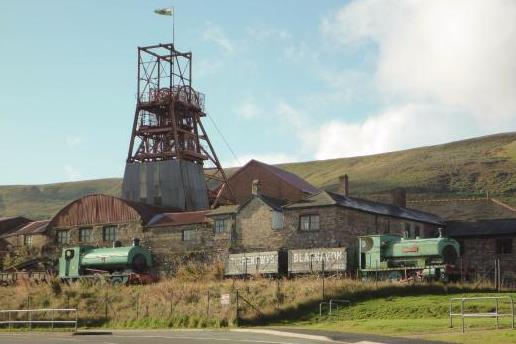
DAY 3 – Cardiff
The Big Pit
The Big Pit is a mine located in Wales at the north of Cardiff. It opened in 1880, it was an active line for 100 years and closed in 1980. Before going into the mine, we had to wear some protection such as a breathing device and a helmet with a lamp on the top of it. To go down in the mine we had to go in a cage (never say elevator), they slowed it for us (2m per seconds) but it usually goes down very fast (4, 5 times faster) and it will be really dark and wet in it.
New technologies:
Over several years, they invented different technologies. to improve the work conditions. They created a security lamp which can’t spark and can’t go out because when they use candles it was really dangerous.
They used a winch to pull the cart using rails, to communicate in the big tunnel, they had an alarm system using a cord. The cage allowed us to go up and down in the mine, it also allowed them to transport the cart and horses.
Who work in the mines:
When the mines were active, hundreds of people were working there, like children, women, men and horses. Children could work in the mines from 5 years old because they were small and it was easy work then it changed to 10 years old to save the youngest from working in the mines. Some younger child and woman worked illegally because the mines weren’t really inspected. Horseslived inside the mines, they were only little horses because there wasn’t a lot of space. They were fed by the owners, more than humans. They hauled the coal karts.
Safety in the mines:
In the mine, we have some precautions to take: never bring electronic devices like watches or phones… to avoid sparks, always wear the helmet with the torch, and be careful about closing the doors correctly. To hold a good temperature inside the different sections of the mine.
The work conditions:
The work conditions were really bad. The environment of the line was usually wet and cold because of the ventilation and the normal temperature underground.
The miners got paid by how much weight they had in their bart with their name on it. They should have ONLY coal in their barts because if there was something else their employees would divide by two the money they owed them and sometimes it would be the chiefs who put other things in it to pay them less than they should.
When you were a miner, you would automatically get a house but way more expensive that what you could find. The miners weren’t getting paid by money but by tokens I the money of the mine. with that they could buy food and everything at the miners shop which like the houses was way too expensive. Because of all that, it was a really stressful job which contributed a lot with the bad environment mentally and of course physically because the more you go far the tiniest it gets.
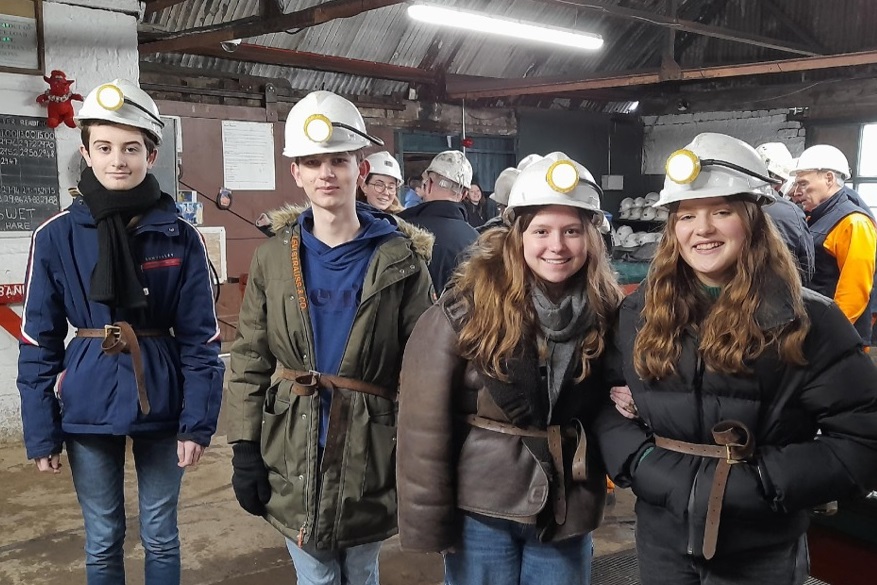
The danger inside the mine:
There were multiple dangers in the mine. Especially 4 principle dangers :
The first one was the gas, two gases actually: methane and carbon monoxide. There were even two explosions caused by them in another mine: the first one was caused by methane which is an explosive gas and the other one by carbon monoxide which suffocated people.
The second danger is the ringing system which, combined with methane, can cause an explosion.
The third danger is landslides. The miners, even if they weren’t paid for that, would secure the offshoots with some woodwork.
The last danger is just the normal life in the mines. You can hurt yourself really easily there.
By Lola, Ema, Thayssa, Antoine and Horea.
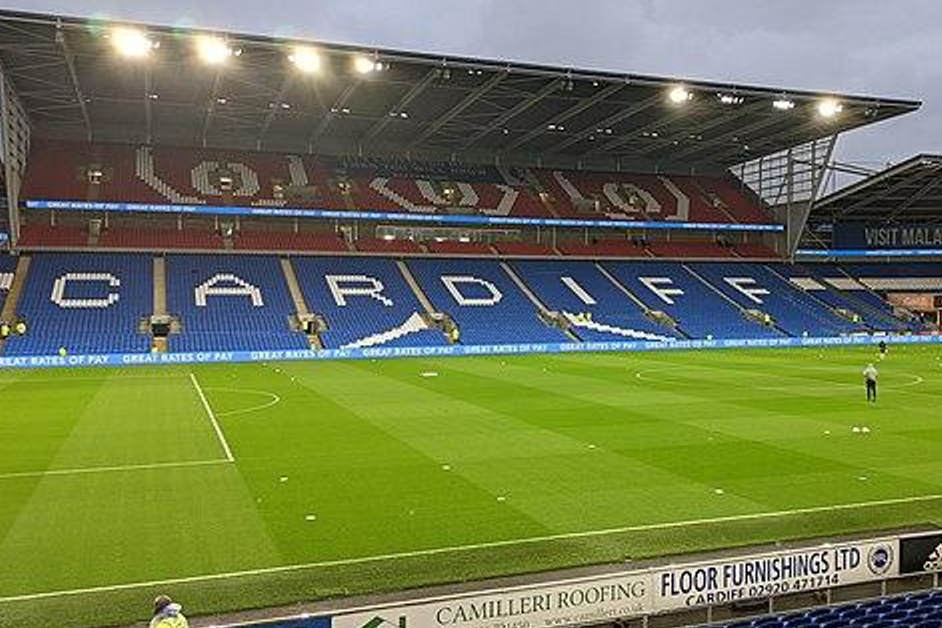
Principality Stadium
Principality Stadium opened in 1999, in Cardiff in the center of the capital city, which allows easy access to it. The principality stadium is the biggest closed stadium of Europe and the third all around the world,with a capacity of 73 961 places, where welsh rugby fans will cry after the defeat against France the 10th March.
We started the visit at 3:30 P.M, and directly went to the highest places to see the whole stadium. The Stadium has really steep stands in order to see the pitch everywhere in the stadium. It creates a family atmosphere and brings the fans together. After that, we visited the changing room of the Welsh team and saw how close are places.
Then we went to the hospitality room (private rooms reserved by people ), the price for one year is around 50 000 to 90 000£, you have unlimited alcohol and your own place for every event. Next we saw the VIP place ( for very important people ) where Queen Elizabeth II was. Finally we went on the field and touch the grass like the professional players.
Our testimony :
Victor : When I entered the Millenium field by the stadium tunnel, I got really emotional and even had goosebumps. I could really imagine the point of view of players when they enter the field with a full stadium shouting at them.
Gabriel : I really liked visiting the dressing room, especially when we heard the audio of a coach motivating his team before a match
Marc-Antoine : The big size of the stadium really impressed me when I first entered the stands. Principality Stadium can contain a capacity of 73000 people and I imagine how impressive it is when the stadium is full of fans
Pierre Antoine : When I sang « La Marseillaise » on the highest seats of the stadium, I got really emotional. Singing our national anthem in Great Britain was really a moving event (even if Welsh people don’t like English people)
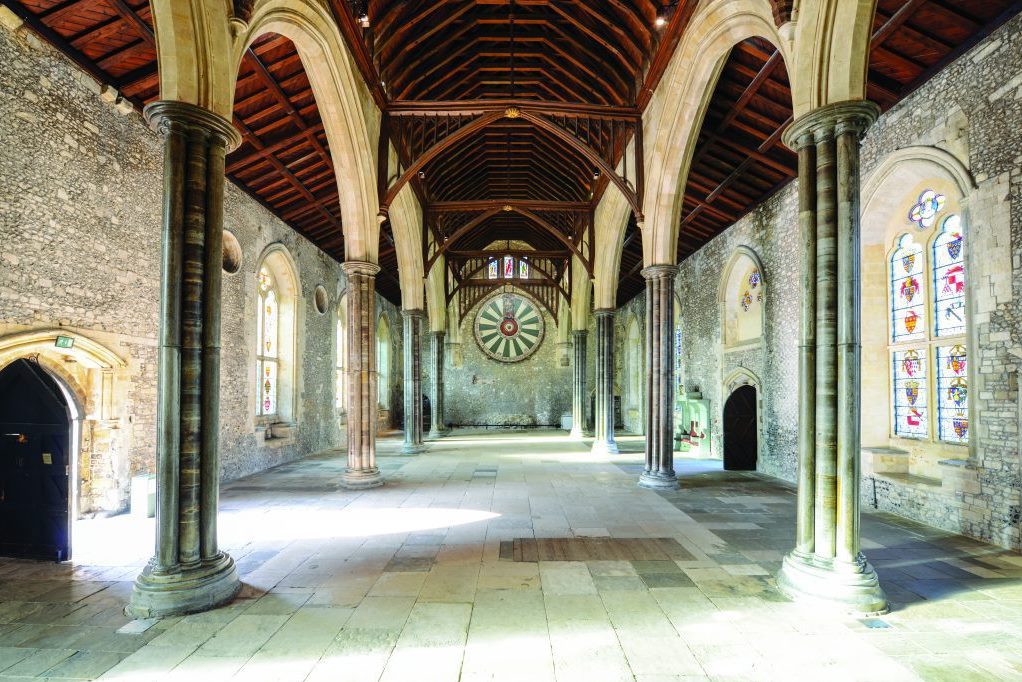
DAY 4 – Winchester
The Great Hall
The construction and the history.
The Great Hall in Winchester was founded in the 12th century by the brother of King Stephen: Bishop Henry of Blois. It was built to a « double cube » design between 1222 and 1235, and added by Henry III. The Great Hall was built to house the bishop in comfort when staying in London on administrative or royal business. The hall was often used to entertain royal guests such as James I of Scotland and Joan Beaufort ,who held their wedding feast here in 1424. The remains were part of the Great hall, which formally stood alongside the south bank of the Thames. The rest of the palace was arranged around two courtyards, and housed many buildings, like a prison, a brew-house and a butchery. They’re also some sports facilities and a pleasure garden for the bishops because they needed to relieve the stresses caused by medieval governance.
The site and the architecture.
There are different places at the Great Hall in Winchester. First, there is the Great Hall, second there is a long gallery, also there is an underground passage, and to finish there is the garden named for the two Queens Eleanor. So to start with the Great Hall, we can say that the style used is the Gothic style. We can admire the soaring Purbeck marble columns and beautiful Gothic pointed arches. Then, in this place we can see the round table of Arthur and his Knight, there are also statues. Second, we can talk about the long gallery, where there are a lot of portraits. You can meet the heroes and villains of the Great Hall’s past from Kings and Queens to judges and executioners. Thirdly, we are going to discuss the underground passage. So the secret passages were created to surprise an enemy or to return to the safety of the Castle in Times of battle and besiege. To finish, there is a garden where we can relax in a recreated medieval garden named after the Queens Eleanor of Provence and Eleanor of Castile. Also, there are seats, a fountain, plants and herb
Big events.
The great gall was one of the largest and finest in England and it’s certainly the finest of that period to have survived today. Its many features include stained glass windows, a judges’ gallery, and wrought steel gates that were installed in 1983 to commemorate the wedding of the prince of Wales and Lady Diana Spencer.
You can also have exclusive use of the great hall for all types of events from wedding ceremonies to medieval banquets and a unique venue for art exhibitions and performances like Susie Mac Murray’s. Moreover some films and TV series were filmed in the great hall like The Crown in 2016.
The Winchester Round Table.
We saw the Winchester Round Table. It is hung on the mainwall and is very well known because of the King Arthur legend. This table is a reproduction of the Round Table of King Arthur legend and is very impressive. It weighs 1200 kg and measures 5.5 meters in diameter.
This table dates from around 1275 and it’s around 1522 that the Winchester table would have been decorated and painted.
On the table, we can see a representation of King Henry VII as King Arthur. They are also the names of the Round Table knights.
Our opinion.
It was interesting and funny to visit the Great Hall because of the costumes available to dress up and the stained glass windows were very impressive. Also pieces are amazing but we disliked some points. For example, the room was big with nothing in it and the museum was very small.
By Maëva , Yaëlle, Mathilde and Sarah.
Cultural Reflection
What is life like for French students living in English families ?
We spent one week in Westbury, in England, so, we are going to present our experience with English families. Thanks to our trip, we will compare life in France and life in the United Kingdom.
The English Channel separates France and Great Britain, two countries which are very different. For example, on our trip, the food, the houses, and the meals were different from home.
We were hosted by John and Joanne Hilborne, who made an effort for three young men from France (Grégoire, Clément and Tom) to learn about English culture.
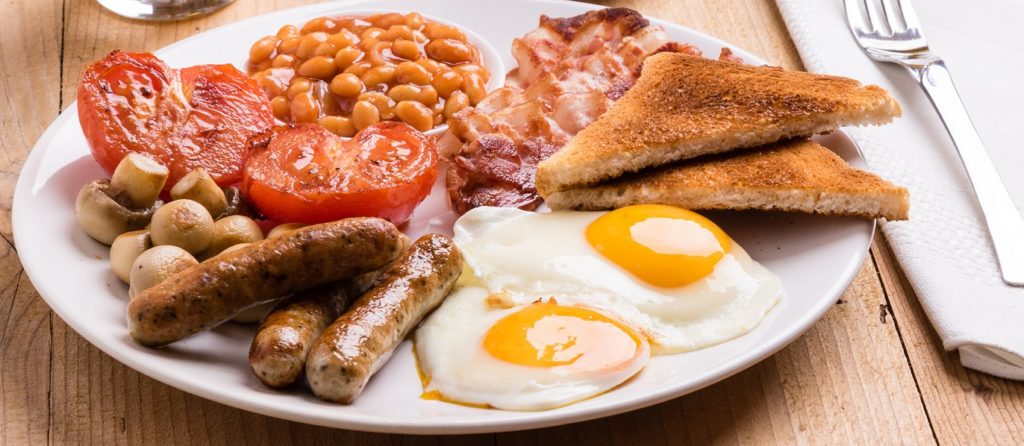
Traditional food, an institution in England
First, let’s explore traditional English meals, an integral part of British culture. From what we saw during our stay, the organization of British meals is not the same as in France. Indeed, they usually eat a large breakfast, with salty food, like sausages, mushrooms, baked beans, potato pancakes ,bacon and eggs. So, lunch is less heavy, and dinner is pretty earlier than in France. We can say that this breakfast has a real impact on other meals in England.
For dinner, English people have their specialties : we ate, for example, a Scottish pie, with vegetables. This meal is very consistent and also very good . We also ate pudding. In other families, pupils tasted jelly, or fish and chips.
Sports, games and activities
We said it, there are a lot of differences between French families and English families, in particular in sports.
For example, John Hilborne told us a story about his son, Thomas, who was a prodigy of snooker when he was young. He even met the world number one of snooker, Ronnie O’Sullivan, who entertained him ! Unfortunately, for personal reasons, Thomas had to stop snooker and couldn’t continue to play.
According to John, Ronnie O’Sullivan is a real star in the United Kingdom, but is down-to-earth, he is a person like you and me.
When John told us this anecdote, we saw that he was proud of his son, because English people love snooker.
John Hilborne also loves darts : he has a room dedicated to this game ! Well, for English people, it’s not just a game : it’s like a national sport, very popular. In Great Britain, dart players are very common, but it’s not the case in France. He suggested we do a match of darts, and we accepted : we had a very good time together.
English families like cricket, and golf too, in particular for John, who practices this sport every week. He also likes tennis : it’s due to the presence of a tournament in his country, very important in this sport : Wimbledon.
About the activities, John is passionate about fishing, in the sea, and Joanne about crafting.
Those sports and activities are, for an important part of them, different from French sports but, like in our country, are really interesting and exciting.
The houses
We were in a bungalow in Westbury ; there was a lot of carpet. However, this detail is not a generalitie in England.
We also saw that the switches weren’t with buttons but, for an important part, were wire switches.
English people sometimes prefer to eat in separate rooms : for example, the children eat in the kitchen and adults eat in the dining room.
England, country of many singers
English people also love music : John loves to put on some music in the evening. He listens to local stars like Sting, Phil Collins, and George Michael. In another family, students woke up to the music of the Beatles.
We like listening to other singers, because it shows us their culture which is different, and their habits.
The feelings of the students
It’s important to remember that what we saw weren’t generalities: these traditions are from different families from Westbury, but would be different in another part of the country. Indeed, John likes snooker and cricket, but it’s maybe not the case for all the English families.
The students liked learning about new cultures during this trip, and are happy to have changed their habits.
The students who ate some jelly disliked it ; it’s maybe the only thing we didn’t love during this trip.
Clément, Grégoire and Tom liked playing darts and listening to John’s anecdotes, and Paul and Emmanuel loved eating a great breakfast.
So, to sum up, French and English people are really different and have their separate traditions. Both of them are respectable and the English culture is very interesting because of the variety of sports and activities.
By Tom, Clément, Grégoire, Emmanuel and Paul.